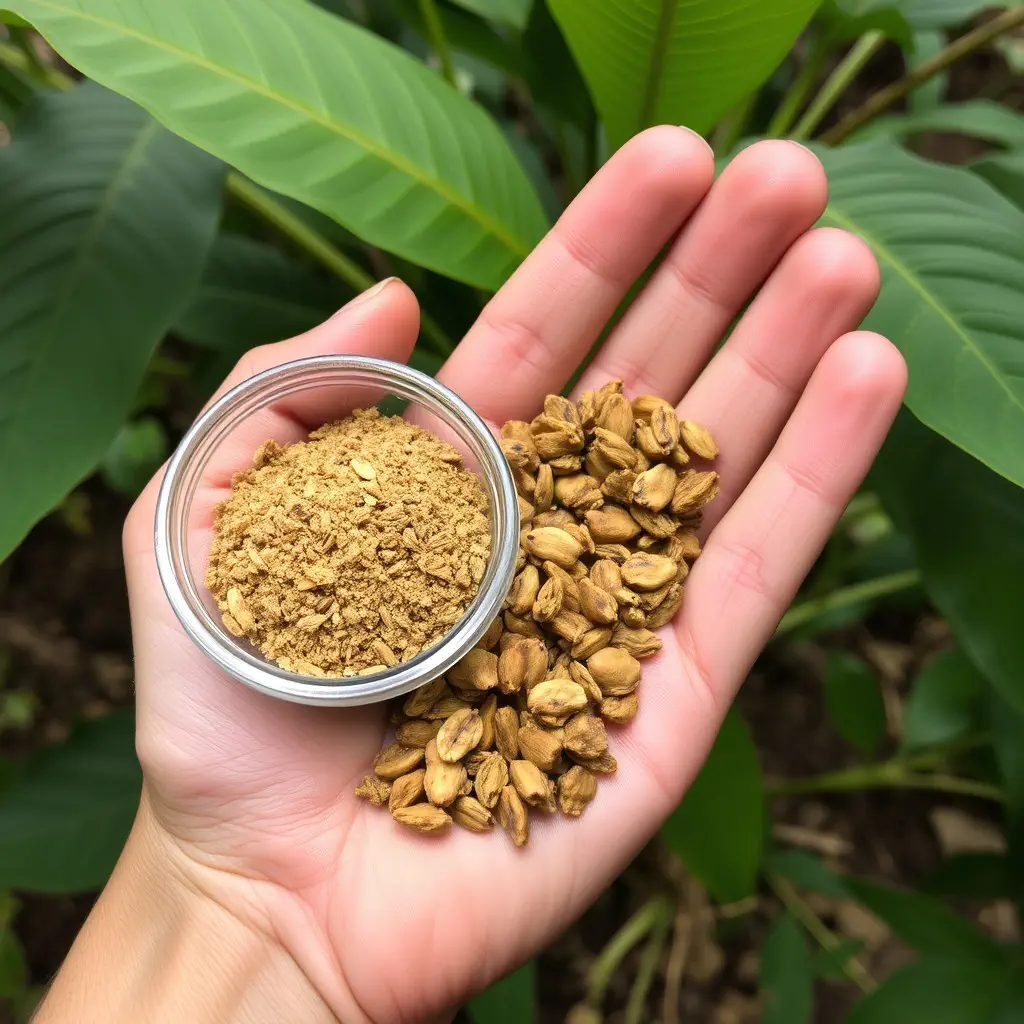Kratom, derived from Mitragyna speciosa leaves, offers potential as an opioid withdrawal aid with its agonist activity at specific opioid receptors. Its effects typically last 4-6 hours, providing a brief but significant window of relief for cravings and anxiety. Users should start with low doses (1-3 grams), maintain proper hydration, follow a balanced diet, and monitor side effects like jitteriness or insomnia under professional guidance to ensure safe and effective use.
“Kratom, a natural herb with growing popularity, has shown promise as an alternative treatment for opioid withdrawal. This comprehensive guide explores the potential of kratom in managing intense cravings and symptoms associated with opioid cessation. We delve into the science behind kratom’s effects, shedding light on how its active compounds interact with opioid receptors. Additionally, we examine the duration of kratom’s benefits, providing insights into ‘how long do the effects of kratom last’ for effective withdrawal management.”
- Understanding Opioid Withdrawal and Kratom's Role
- How Long Do Kratom Effects Last for Withdrawal?
- Safe Use and Considerations for Kratom in Withdrawal Management
Understanding Opioid Withdrawal and Kratom's Role
Opioid withdrawal symptoms can be intense and challenging, often including physical and psychological discomfort such as anxiety, nausea, insomnia, and severe cravings. These symptoms typically emerge within a few hours to days after stopping or reducing opioid use. The duration and severity of withdrawal vary based on factors like the type and quantity of opioids consumed, the length of dependence, and individual differences in metabolism.
Kratom, derived from the leaves of the Mitragyna speciosa plant, has gained attention as a potential aid for managing opioid withdrawal. It acts as an agonist at specific opioid receptors in the brain and body, mimicking some of the effects of opioids but with a different chemical structure. This interaction can help alleviate withdrawal symptoms, including cravings. The effects of kratom typically last 2-6 hours, offering a controlled window to manage withdrawal before any intense cravings or physical discomfort resurfaces. However, it’s crucial to consult healthcare professionals for personalized guidance and to ensure safe, effective use.
How Long Do Kratom Effects Last for Withdrawal?
Kratom’s effects on opioid withdrawal symptoms typically last between 4 to 6 hours, offering a brief but significant window of relief. This duration can vary depending on several factors, such as the individual’s metabolism, the specific strain and dose of kratom consumed, and personal tolerance levels. For those using kratom as part of their withdrawal management strategy, understanding these variations is essential.
The effects often start within 15-30 minutes after consumption, providing a calming and analgesic sensation that can help alleviate cravings and anxiety. As the effects wear off, users might experience a resurgence of withdrawal symptoms, which is why it’s recommended to space out doses to manage these fluctuations more effectively.
Safe Use and Considerations for Kratom in Withdrawal Management
Kratom, derived from the leaves of the Mitragyna speciosa plant, has gained attention as a potential aid for opioid withdrawal. However, safe use and careful consideration are paramount when managing withdrawal symptoms with kratom. The effects of kratom can last anywhere between 4 to 6 hours, offering a controlled release that can help manage cravings and anxiety during withdrawal. Dosage and strain selection are critical; beginners should start with lower doses, typically around 1-3 grams, to gauge their tolerance and avoid adverse reactions. It’s essential to consult healthcare professionals before incorporating kratom into any withdrawal strategy, especially for those with pre-existing medical conditions or taking other medications.
Regular monitoring is crucial, as individual responses to kratom can vary widely. Users should be aware of potential side effects, including jitteriness, dry mouth, and insomnia. Long-term use and dependence on kratom should also be avoided, as it may lead to withdrawal symptoms itself. Responsible usage includes limiting consumption to short periods under professional guidance, ensuring adequate hydration, and maintaining a balanced diet to support overall well-being during the withdrawal process.
Kratom has emerged as a potential natural solution for managing opioid withdrawal symptoms, offering relief without the risks associated with pharmaceutical alternatives. Understanding its role and safe use can empower individuals navigating this challenging process. Research suggests that kratom’s effects on opioid withdrawal can last for several hours, providing sustained support. However, it is crucial to approach its use with caution, considering individual tolerances and seeking professional guidance. By prioritizing informed decisions and adhering to safe practices, individuals can effectively manage withdrawal while exploring the potential benefits of kratom as a complementary therapy.





